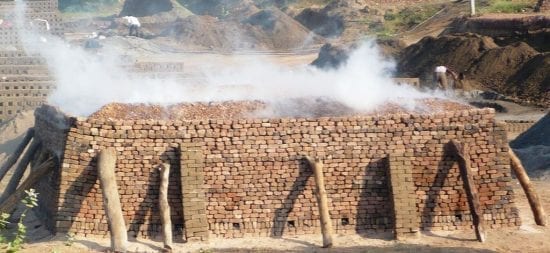
Modern-day Slavery & Environmental Destruction: A Discussion with Kevin Bales
If slavery were a country, it would be the third largest producer of CO2 in the world after China and the United States – Kevin Bales, Blood and Earth: Modern Slavery, Ecocide, and the Secret to Saving the World.
Modern-day slavery and human trafficking are recognized as international crises, yet they are often viewed in isolation from other global challenges. Kevin Bales, author and Professor of Contemporary Slavery at the University of Nottingham, is reshaping the narrative by demonstrating that these crimes are intertwined not only with global supply chains, but also environmental destruction and climate change.
Human Trafficking Search recently spoke with Kevin Bales to learn more about his research and the linkages between human trafficking, modern-day slavery, and environmental degradation.
From mineral mines in Congo to shrimp farms and fish camps in the Sundarbans and brick kilns in Nepal, Pakistan and India, modern-day slavery is inherently linked with environmental destruction. For example, in the Sundarbans, a vast coastal forest and UNESCO World Heritage Site in the Bay of Bengal, slave labor is used to cut down mangroves – which remove CO2 and serve a key defense against erosion, tsunamis, and natural disasters – and create shrimp farms and fish camps – which contribute to increasing salinity that harms agricultural land – creating a vicious cycle of slavery-based environmental destruction. In Brazil, slave labor contributes to deforestation through illegal logging. In Ghana, children and adults labor in gold mines drenched with mercury, damaging the land and exposing the people to toxic chemicals. In the mines of Eastern Congo, which supply minerals for cellphones and other electronics, modern-day slavery degrades water quality, increases deforestation, contributes to poaching of wildlife, and takes a terrible toll in human life. Across these sectors, men, women, and children are forced into dangerous labor extracting resources for use in commercial products.
Bales argues that combating slavery can help protect the environment as some of these environmentally damaging practices, such as slavery-based brick kilns and gold mining, will cease to be profitable without slave labor: “In the brick kilns, that’s the same process they used in ancient Egypt when they enslaved Jews, you can buy a Chinese brick shaping machine that’s very small, very durable, and very effective without spending much; modernization, even a little bit, works more efficiently for everyone. It’s the same with gold mining. The idea that you would dump mercury everywhere and poison the environment and poison people for a fairly small amount of gold is a bit mad.”
These are just a few examples in Bales’ most recent book, Blood and Earth: Modern Slavery, Ecocide, and the Secret to Saving the World. At the University of Nottingham, Bales co-leads a group of over 100 researchers studying modern-day slavery and has launched a project identifying carbon emissions from slave-based businesses. Using satellite imagery, his team has located almost 50,000 brick kilns across Nepal, Pakistan, and India, and five additional slave-based fish camps in Bangladesh, sharing this information with relevant authorities to improve enforcement capacity.
Though eradicating slavery is an uphill battle, Kevin Bales is optimistic: “once you recognize that linkage you can begin to address it… it’s a web like any other crime and what I want to do is focus on a particular series of strong links within it and show how two of our biggest worries [modern-day slavery and climate change] are in fact deeply linked. On one hand it’s a sad fact to learn, but on the other, it opens up the possibility of trying to combat both of them.” Further, Bales speaks to a freedom dividend, economic, environmental, and social improvements that occur when individuals are removed from slavery: “it’s important to get past this idea that people in slavery are only victims, that they can’t really do much, when in fact they’re just people waiting to get free so they can make big changes.” Freeing people from slavery, “opens the door to positive impacts in all kinds of ways, from policy level right down to the ground where you plant a tree.”
For more information on Kevin Bales’ research on the linkages between human trafficking, modern-day slavery, environmental degradation, and climate change, read:
Blood and Earth: Modern Slavery, Ecocide, and the Secret to Saving the World
The Deadly Link between Slavery and Environmental Destruction, The Earth Institute (video)
How Hunger for Shrimp and Slavery Destroy Mangroves
Photo courtesy of Wikimedia Commons.
